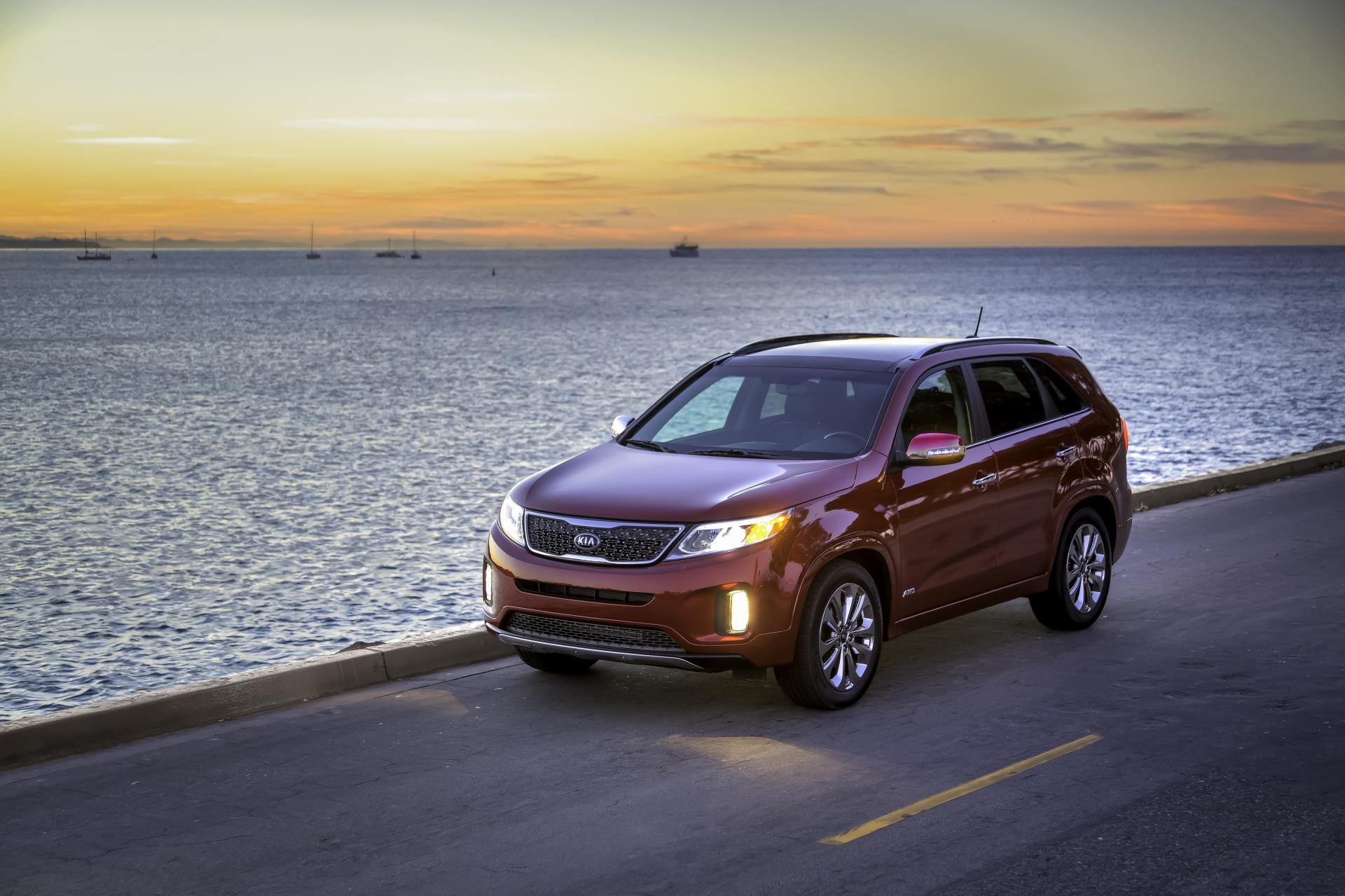The Sorento is Kia’s largest and most expensive model. So, it’s no surprise to hear the Korean manufacturer boast that the latest version is also its most luxurious. As with its predecessors, the Sorento packs seven seats into its SUV body, and four-wheel drive is fitted to all models.
Power comes from a 2.2-litre diesel engine, and there’s the option of either a six-speed manual or six-speed automatic gearbox, plus the Sorento can tow a braked trailer of up to 2.5 tonnes.
Its closest rivals in terms of size and price are the Hyundai Santa Fe and Nissan X-Trail. And you might like to think of all three as cut-price alternatives to the Volvo XC90 and BMW X5.
Here’s a list of pros and cons.
Space in the Kia Sorento
While not offering quite the same amount of space in the third row of seats as a Land Rover Discovery, the Sorento is still comfortably bigger than a Discovery Sport. Access to those rear seats is also reasonable, certainly for children, who are most likely to use them.
The second row (complete with adjustable backrests and the ability to slide back and forth) provides enough room for three adults to fit comfortably, helped by the completely flat floor. And those up front won’t have cause for complaint either, with a big glovebox, deep door pockets and a large central storage bin.
With the rearmost seats stowed (a process that takes just a few seconds), the boot is enormous, with a flat yet high loading lip. Nevermind holding a baby buggy, you could run a nursery from the Kia’s boot.
As with all of these large SUVs, you can also create van-like space by folding the second row of seats to form a completely flat floor.
Comfort in the Kia Sorento
Kia boasts of the many refinements it has made to the latest Sorento to ensure it is as quiet and as comfortable as possible. Sure enough, its soft suspension provides a cosseting ride, while once up to speed the rattle of the diesel engine fades into the background.
Road and wind noise are also mostly well contained, making this a relaxing car for long journeys.
The downside of the softer suspension comes in a slight lack of body control on twisty roads, where the Sorento leans heavily, while heavy braking also causes the nose to dive.
The steering wheel and large, comfortable seats offer plenty of adjustment, and you can specify ventilation controls for all three rows of passengers.
Dashboard Styling of the Kia Sorento
Kia’s relentless march to match the best European interiors continues with the Sorento, which boasts a high level of fit and finish, as well as a logical control layout and the de rigueur central touchscreen (7 inches as standard).
The heating controls are intuitive to use, but music fans should note that while you can plug an MP3 player in via a USB socket, there isn’t a CD player.
Driving Ease of the Kia Sorento
It’s stating the obvious, but the Sorento is a big, wide car, and it feels it to drive, particularly in busy downs or narrow car parks. That said, the controls are all light enough, so the physical effort involved in maneuvering the Sorento is no greater than in most other cars.
The standard manual gearbox is a bit clunky in its operation, so I’d recommend upgrading to the automatic.
While no worse than any other car of this type, visibility can be a bit tricky, both in terms of the thick windscreen frame and over your shoulder when changing lanes on the motorway. Reversing is eased thanks to rear proximity sensors on all models. A reversing camera and front proximity sensors are also available.
Given the kind of vehicle it is, there’s nothing wrong with the Sorento’s soft suspension and slow, lifeless steering, but they do not endow it with much of a sense of fun. Rather, this feels more like a traditional 4×4, with a body that takes a moment to regain its composure when asked to change direction in a hurry.
Performance from the 2.2-litre diesel engine is surprisingly punchy given the amount of car it has to shift, and there’s enough mid-range pulling power to ensure you aren’t forever needing to change gears. Fun, though? Not really.
Reliability of the Kia Sorento
The Sorento comes with Kia’s seven-year, 100,000-mile warranty – no other manufacturer demonstrates such faith in its products.
The Sorento returned a maximum of 48mpg in fuel economy tests, although in the real world you can expect to see about 37mpg in mixed driving for cars equipped with a manual gearbox, or 34mpg for the automatic.
The admittedly less powerful Nissan X-Trail offers up to 58mpg if you forgo the option of four-wheel drive, and even with four-wheel drive is more economical than the Kia.
Safety in the Kia Sorento
All models feature six airbags as standard and an electronic stability system to help you recover the car if it begins to skid.
It outperformed the Nissan X-Trail for adult occupant protection, and matched if for child occupant protection, although the Hyundai Santa Fe performed better still.
Numerous advanced safety features are also available, including lane departure warning, blind spot detection and an active cruise control system that can maintain a set distance to the car in front, even bringing the Sorento to a complete halt to avoid an impact if necessary.

